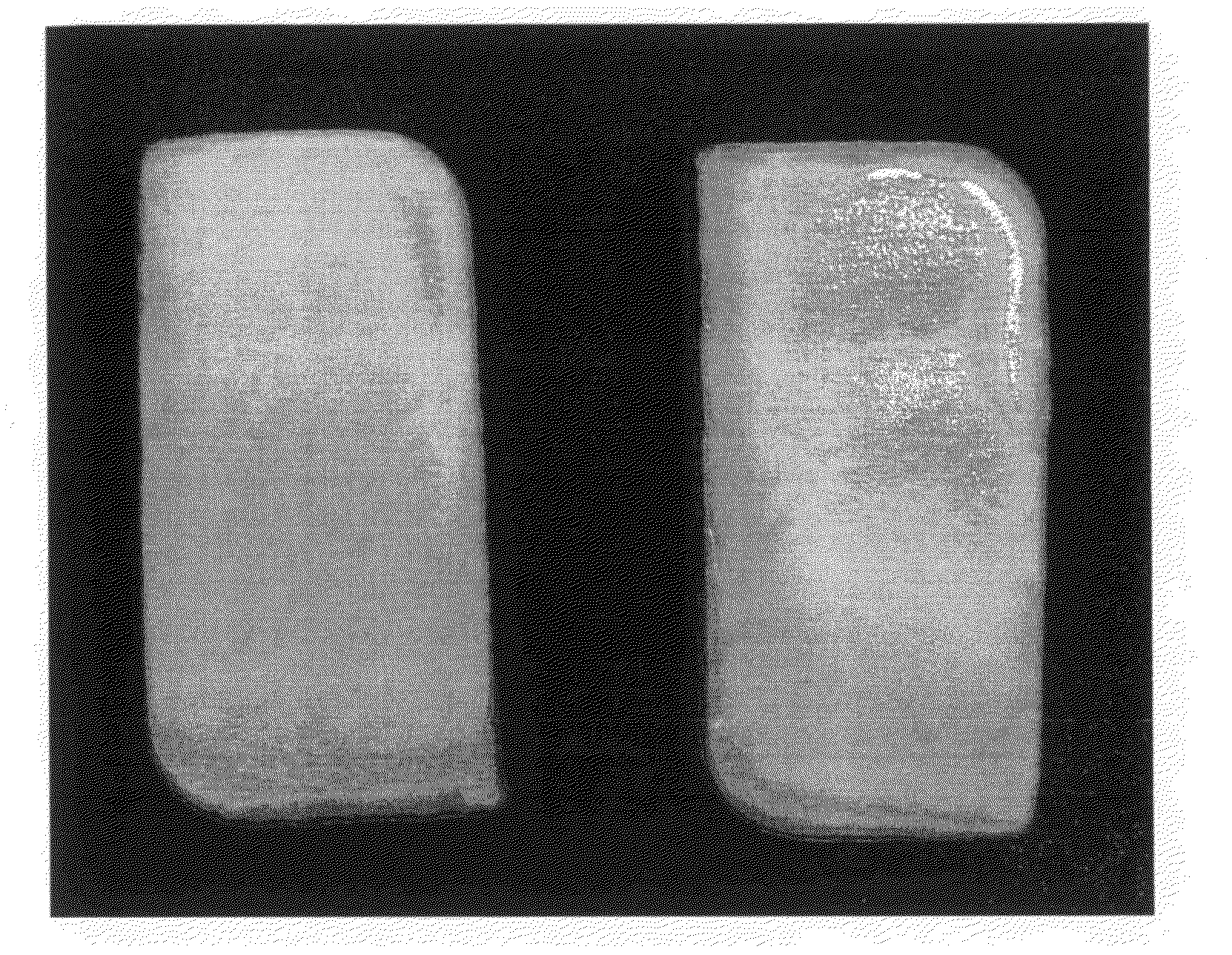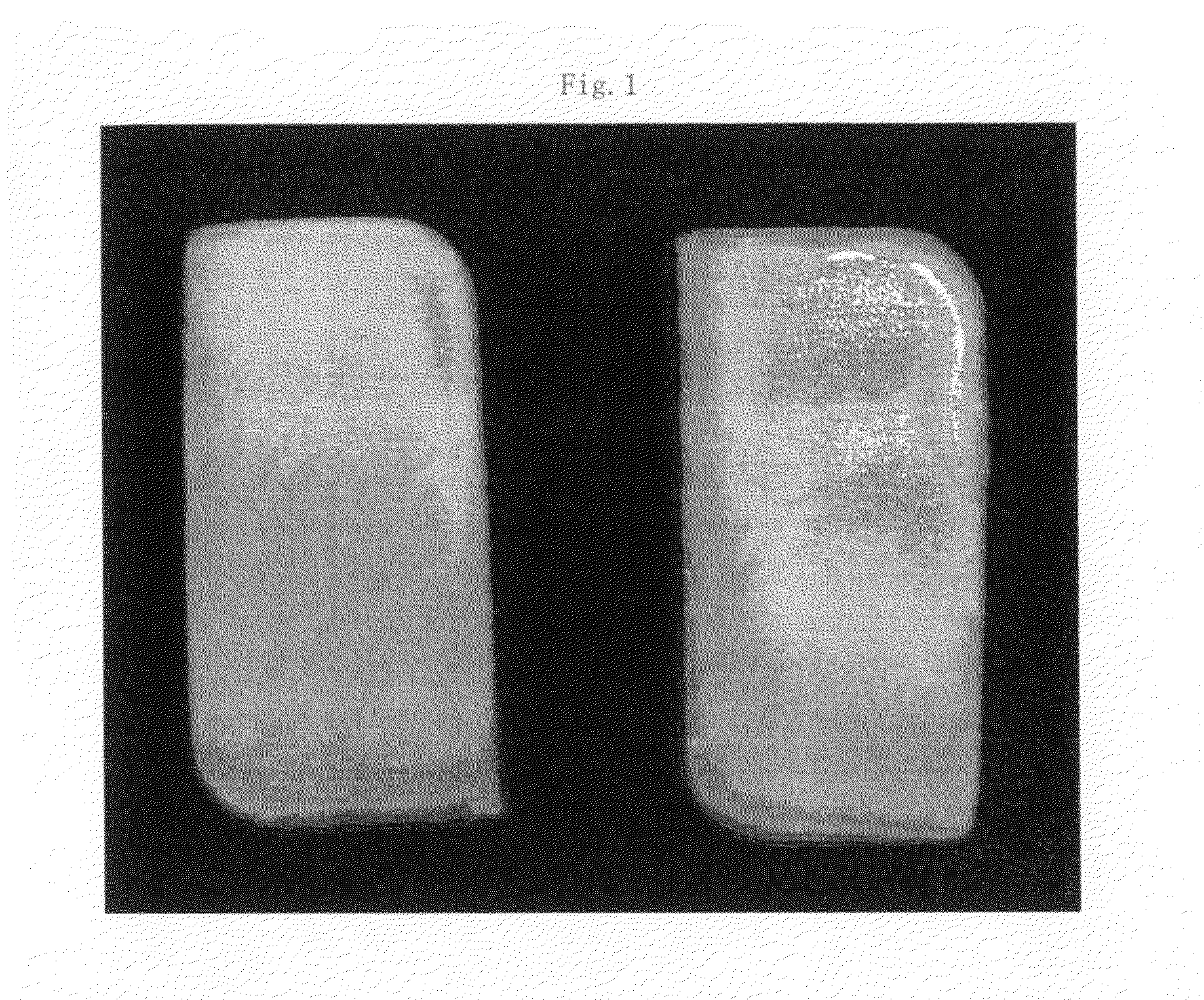Optical glass
- Summary
- Abstract
- Description
- Claims
- Application Information
AI Technical Summary
Benefits of technology
Problems solved by technology
Method used
Image
Examples
examples of
production of the press-molding glass gob are as follows.
In a first production example, a molten glass flowing out of a pipe is continuously cast into a mold that is horizontally placed below the flow pipe, and it is shaped in the form of a plate having a constant thickness. The shaped glass is continuously withdrawn in the horizontal direction from an opening portion provided on a side surface of the mold. The withdrawal of the shaped material in the form of a plate is carried out by means of a belt conveyor. The withdrawal speed of the belt conveyor is set at a constant speed, and the glass shaped material is withdrawn such that it has a constant thickness, whereby a glass shaped material having a predetermined thickness and a predetermined width can be obtained. The glass shaped material is carried to an annealing furnace by means of a belt conveyor and gradually cooled. The gradually cooled glass shaped material is cut or split in the plate thickness direction, and each cut piec...
example 1
Carbonates, nitrates, hydroxides, oxides, boric acid, etc., were used as raw materials, and powders of the raw materials were weighed and fully mixed to obtain formulated raw materials for obtaining glasses Nos. 1 to 10 having compositions shown in Table 1. The formulated raw materials were placed in platinum crucibles and heated at 1,400° C. to melt them, and the molten glasses were refined and stirred to obtain homogeneous molten glasses. These molten glasses were cat into pre-heated molds and rapidly cooled, and they were maintained at temperatures around their glass transition temperatures for 2 hours and then gradually cooled to give optical glasses named glass Nos. 1 to 10. No crystal precipitation was found in any of the glasses.
The glasses were measured for properties by methods shown below. Table 2 shows the measurement results.
(1) Refractive Index nd and Abbe's Number νd
An optical glass obtained by gradual cooling at a rate of 30° C. / hour was measured.
(2) Glass Transition ...
example 2
Press-molding glass gobs formed of the optical glasses Nos. 1 to 10 in Example 1 were produced in the following manner.
First, glass raw materials were prepared so as to obtain the above glasses, and they were placed in platinum crucibles, melted under heat, refined and stirred to give homogeneous molten glasses. Each molten glass was caused to flow out of a flow pipe at a constant flow rate and cast into a mold that was horizontally arranged below the flow pipe to form glass plates having a constant thickness. Each of the thus-formed glass plates was continuously withdrawn in the horizontal direction through an opening portion provided on a side surface of the mold, carried into an annealing furnace with a belt conveyor and gradually cooled.
The gradually cooled glass plates were cut or split to make glass pieces and these glass pieces were barrel-polished to obtain press-molding glass gobs.
In addition, press-molding glass gobs can be also obtained by arranging a cylindrical mold bel...
PUM
| Property | Measurement | Unit |
|---|---|---|
| Fraction | aaaaa | aaaaa |
| Fraction | aaaaa | aaaaa |
| Fraction | aaaaa | aaaaa |
Abstract
Description
Claims
Application Information
 Login to View More
Login to View More - R&D Engineer
- R&D Manager
- IP Professional
- Industry Leading Data Capabilities
- Powerful AI technology
- Patent DNA Extraction
Browse by: Latest US Patents, China's latest patents, Technical Efficacy Thesaurus, Application Domain, Technology Topic, Popular Technical Reports.
© 2024 PatSnap. All rights reserved.Legal|Privacy policy|Modern Slavery Act Transparency Statement|Sitemap|About US| Contact US: help@patsnap.com









